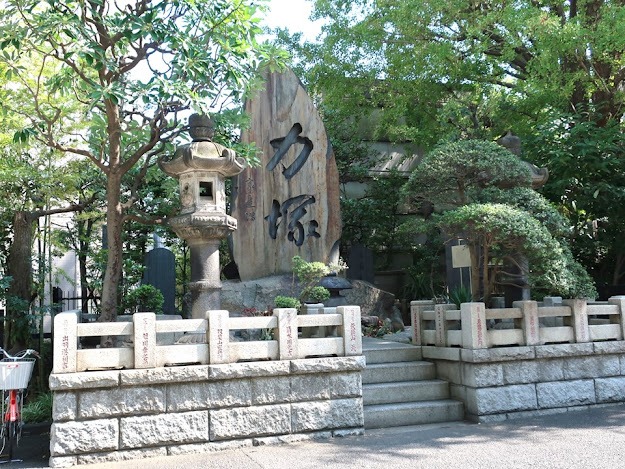Ryogoku is famous as a sumo wrestling district. There are Ryogoku Kokugikan (national sport = sumo arena) which includes Sumo Museum.
The museum hold only temporary exhibition and photography is prohibited. I would like to show you the museum and Ryogoku district here.
By the way, I visited Fukagawa Edo museum on the same day which held a temporary exhibition about sumo grand champion, Taihou. There were many sumo pictures (Fukagawa Edo museum(Part2)). I will introduce it in the next article with many sumo pictures.
両国と言えば、相撲のメッカ。国技館内に相撲博物館があるが、こちらは常設展が無く撮影禁止。周辺の名所とともに巡る。続けて行った深川江戸資料館では、昭和の大横綱・大鵬の特別展示をしていて相撲の用具や写真がタップリ(江東区深川江戸資料館(その2))。
There is a big panel about sumo in 1852 at Ryogoku station. It is a longstanding popular sport.
両国駅の構内に掲げられた「両国大相撲繁栄之図」(1852年)。ペリーが来た頃だが、大賑わい。
There was no game when I visited, however I could see flags of sumo wrestlers and a tower which equips a dram to notice the start of the event. It is always colorful.
訪れた時は場所は開かれてなかったが、江戸時代と同じように幟が揚がり、太鼓櫓があります。華やかな感じになる。
The arena was built in 1984. The capacity is eleven thousand visitors, but tickets are always sold out.
Official ticket information: http://www.sumo.or.jp/EnTicket/
1984年竣工の両国国技館。1万1千人を収容するが相撲のチケットはいつも売り切れ。
Sumo Museum、相撲博物館
Entrance、入口
The area is as almost same as two classrooms and admission fee is free.
The temporary exhibition was the lineage of Yokoduna grand champion “Kisenosato” in which he was introduced with his master ”Takanosato” and grandmaster “Wakanohana”, both of them were also grand champions.
Their sumo costumes and photos were shown. I felt the tension of the serious match.
The museum is closed on Saturday, Sunday and national holidays. During the tournament, only audiences can visit there. Current exhibition is uploaded at the site; http://www.sumo.or.jp/EnSumoMuseum/.
相撲博物館は、教室二つぐらいの大きさだ。無料でありがたい。
訪問した時は、断髪式を控えていた稀勢の里、その師匠の隆の里、更にその師匠の初代若乃花、のまわしや写真の展示であった。勝負の緊張感が伝わる。
開館日注意(土・日・祝日休で、場所中は相撲の入場券が必要)。
展示の内容は都度確認を:http://www.sumo.or.jp/KokugikanSumoMuseum/ 訪問した時は、断髪式を控えていた稀勢の里、その師匠の隆の里、更にその師匠の初代若乃花、のまわしや写真の展示であった。勝負の緊張感が伝わる。
開館日注意(土・日・祝日休で、場所中は相撲の入場券が必要)。
Wakanohana’s decorated belts (upper) and Kisenosato’s ones (lower)
若乃花(上段)と稀勢の里の化粧廻し(パンフレット)
Takanosato’s white belt and commemorative
stamp
隆の里の廻し、いただいた記念スタンプ
There are photo spots in front of the arena.
国技館の前は撮影スポット
There are three spots. Upper right is a spot for a lady in a posture of a princess which is called Ohimesama(princess)-Dakko(lifting up) in Japanese.
お姫様だっこを含めて三パターンありました。
Ekouin temple、回向院
The fourth shogun built this temple in order to dedicate to the souls of the casualties during a fire in 1657 which killed more than one hundred thousand people in Edo and burned the Edo castle tower (Meireki Great Fire). This temple also prays for the souls of the dead of disasters afterward.The sumo tournament had been held here since 1768, so this place is regarded as the center of sumo wrestling.
The approach to the modern main hall from the sanmon gate.
山門から近代的な本堂への道
1657年、明暦の大火で亡くなった十万人以上の犠牲者を弔うために、四代将軍が建てた回向院。その後、天災・人災で亡くなった様々な命を埋葬供養している。1768年以来、勧進相撲が行われ、相撲の中心地になった。
On the left side of the approach, there is a stone monument “Tikara (Power)-duka” which is dedicated to sumo wrestlers. Fresh sumo wrestlers come here and pray for getting superior power. This was built in 1936.
参道の左には先人の力士を慰霊する力塚。新弟子が力を授かるように祈願する。1936年建立。TV番組で紹介される石碑です。
Tomb of a benevolent thief “Nezumi (mouse) -kozou” who delivered money to the ordinary people in the Edo period.
Japanese have a custom to have a piece of the monument as a talisman.
This tomb is very popular among gamblers, so another tomb for scraping is stood in front of the original one. Gamblers and entrance examinees shave it off and have it.
鼠小僧次郎吉の墓。墓石を削りお守りに持つ風習が江戸時代から続き、削るための「お前立ち」が用意されている。ギャンブラーや受験生が持って帰る。
Reference(参考):Kiyu-Shouran (Entertainment Encycl.) 、嬉遊笑覧 (Part 1)
Gamble, Lottery (Vol. 8)、勝負事・鬮(くじ・巻の八)
The site of K. Kira、吉良上野介邸跡
There are many films about Chushingura in which Kira was a villain. Ronins of Asano clan killed him here in 1703.“47 Ronin” is one of the most popular films about this.
多くの歌舞伎や映画になっているが、アメリカ映画「47 Ronin」(2013)は来日外国人もよくご存じ。
Enjoyable Ryogoku、両国の街
Very famous clothes store for sumo wrestlers. You can buy big clothes here.お相撲さんの普段着で有名なキングサイズの服屋さん
Specialty dish is “Chanko” hot pot which is served at sumo stables. I've visited this restaurant, and I like it! There are many Chanko restaurants here.(Signboard of Yoshiba)
両国といえば、ちゃんこ鍋(吉葉の看板)
I ate a stamina ramen at “Juhachi-ban (number 18)”, it’s good!
The autographs (handprint) of sumo wrestlers are set at the wall. It is written, “These hands invite tens of thousands of customers”. Sounds good!.
中華ダイニング・十八番のスタミナ麺。ちょっとピリッとして美味かった。地元で働いている人に人気。
カウンターの上には、お相撲さんのサインと手形「此の手で招く千客万来」。力強い。
Visited in September, 2019
Website: http://www.sumo.or.jp/EnSumoMuseum/
http://www.sumo.or.jp/KokugikanSumoMuseum/ (in Japanese)
accessed in August, 2020
Previous post (Museum in Ryogoku):
Next post (Temporary exhibition about sumo grand champion):

















Comments
Post a Comment